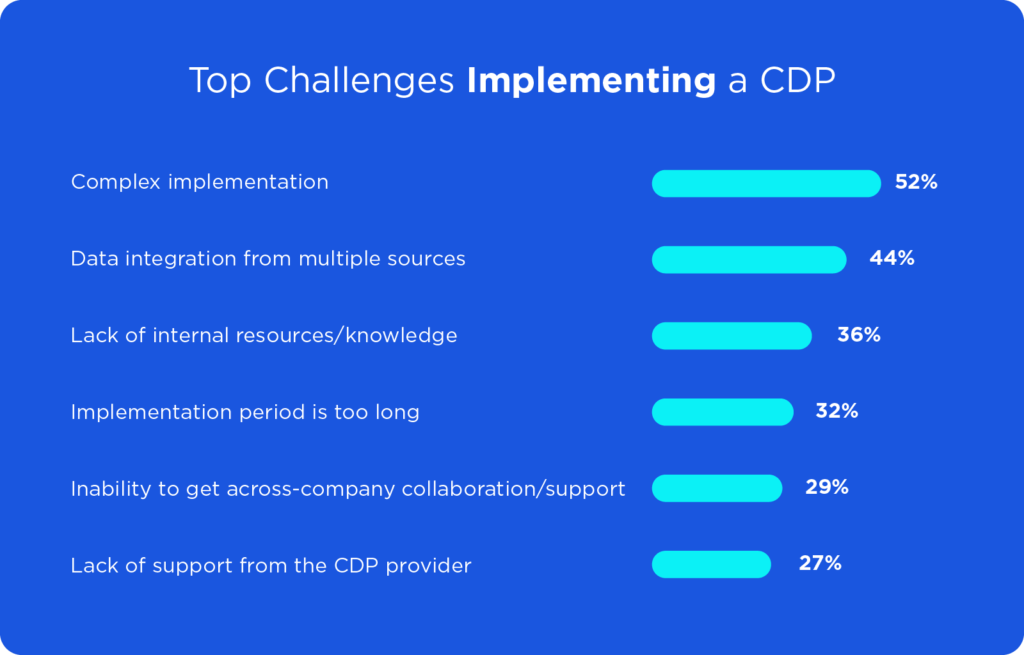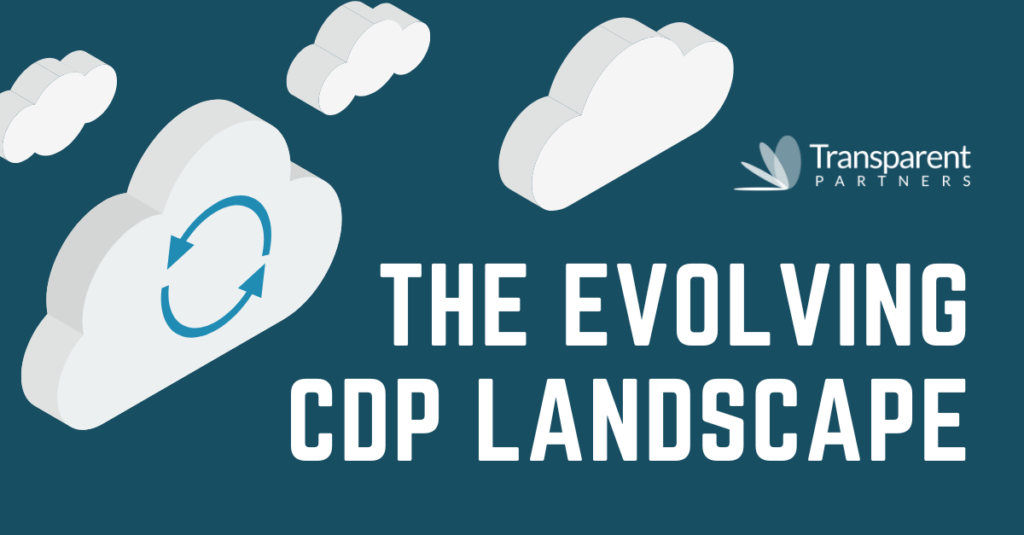The Benefits of Buying a Customer Data Platform
March 13, 2023As tech platforms such as Facebook face increased pressure around customer privacy and marketers anticipate the deprecation of third-party cookies, it’s essential for brands to develop first-party connections with their customers. New and upcoming restrictions on data acquisition and data management require brands to have direct and trusted relationships with their customers.
Customer data platforms (CDPs) have become a fundamental tool for businesses to gain real insight into their customers, including understanding preferences and intent. In fact, 75% of advertisers use a CDP in their daily operations, according to a research report that we jointly published with Advertiser Perceptions.
The research report, which is based on a survey of 100 martech decision makers who use CDPs, explores how CDPs drive value today and how decision makers expect to get greater value out of them in the near future. Some of the data included in this blog post comes from survey data that was not included in the final report.
The decision between building or buying a CDP is more challenging than it appears. Organizations must consider numerous factors when determining the approach that is most appropriate for them. As there are both advantages and disadvantages to either choice, it can take time to determine which solution is best for your business. In this blog post, we’ll go through the CDP value chain in detail and discuss why buying versus building may be the better option.
Why Companies Consider Building a CDP
Building an in-house CDP may be attractive to companies that want more control over the customer data they collect and process. For example, businesses can custom-design their platform according to their exact needs and determine which data sources should be included and how they all fit together.
However, this means that organizations must invest in the resources necessary to properly understand and capture customer data. This includes hiring a team of engineers, database developers and data scientists who can develop custom solutions.
Businesses must be aware that building a CDP requires an ongoing investment in maintenance and updates—otherwise, their platform could quickly become outdated or insufficient for capturing and managing the data they need.
Potential Downfalls of Building a CDP
Designing, developing, and operating a CDP is time-consuming and expensive. Unless the organization has substantial resources devoted to this task, it would require hiring additional staff that could drive up costs significantly.
Additionally, organizations must consider the risk associated with building their own platform—any mistakes made in constructing or maintaining the system could be costly and result in data breaches or other damaging outcomes.
The CDP must be able to integrate with the existing marketing stack—something that can be difficult to do if the platform has been custom-built. This could lead to compatibility issues, further adding costs and time delays.
Although homegrown CDPs are capable of combining data, they can be inconvenient for marketing. Every time one needs to adjust an attribute or connect a new system, it has to go through IT and become stuck in the process. Instead of becoming a core part of digital marketing success, these solutions end up as bottlenecks hindering further progress.
Build vs. Buy: The Why
Buying a CDP should mean something more than just another software purchase. To maximize value and stay competitive, you need to look at how quickly you will experience your investment results and its total cost of ownership.
A CDP can provide businesses with a solution built on top of existing technology and infrastructure, allowing companies to quickly and easily integrate their existing data sources and leverage those insights to drive efficiency.
Just ask the 80% of companies that have licensed their CDP from a third-party vendor. This quote comes from a martech decision maker (Director, Strategy + Transformation (CE) whom we interviewed in the Advertiser Perceptions research study: “We don’t have the ambition to build the CDP. We’d have to invest in getting the right people if we want to build it. And it’s better to act smart…there’s no point reinventing when you can find synergies with existing companies.”
Additionally, buying a CDP can save companies money in the long run since they don’t have to continuously invest additional resources into software maintenance and bug fixes. With 52% of companies citing the high cost of building internally, it’s clear that cost is a key factor in this decision.
By using a third-party platform, businesses can pay a fixed price or subscription fee for the lifetime of their solution, which can be more cost-effective than building it from scratch. While buying software, by definition, has some upfront costs, it is still a good investment in the long run.
And while the suggested higher upfront cost of buying versus building may be a concern for some, the backing behind this myth has been dispelled.
The Fear Behind Implementing a CDP
Some organizations may be hesitant to move forward when considering a CDP solution due to fears surrounding implementation and integration. These fears range from a complex implementation process to a need for more support from the CDP provider. Key findings from the Advertiser Perceptions research report included:
- Over half of the organizations interviewed experienced challenges due to implementation complexity
- Two in five had issues with data integration
- Lack of internal resources / knowledge is another contributing factor

As you can see in Figure 1, lack of support from your CDP provider is a top challenge around implementation. However, with the right vendor and team of experts, companies can rest assured that their organization will be in good hands throughout the entire process. Working closely with a partner with proven experience in implementing CDPs will help ensure that they are on the right track and set up for success. The following is a quote from an interview with a Precision Marketing Lead in CPG we conducted as part of the Advertiser Perceptions research: “Never for a second did we consider building our own because we’re a global CPG brand portfolio. We have media and marketing expertise and a lot of brand and agency knowledge, but from a tech perspective, we have to rely on best-in-breed solutions.”
Your CDP vendor should have in-depth expertise in the best practices of CDP implementations, helping organizations quickly and efficiently integrate their platform with existing systems. This will ensure that the implementation process is as seamless as possible.
The benefits of buying a CDP far outweigh the cost savings of building one. When done right, deploying a ready-made CDP solution can help companies reduce complexity and improve scalability and performance—all while achieving a faster time to value.
How Treasure Data Can Help
There’s been some discussion in the industry around composable or unbundled CDPs. The concept is to build a CDP by assembling various components and integrating them into a data warehouse.
The most advanced CDP platforms in the market (including Treasure Data Customer Data Cloud) can compete with any composable CDP—in fact, the argument for using composable CDPs are based on common myths that can be dispelled.
Advanced CDP platforms like Treasure Data are built on a solid data framework and supply all the advantages of using a data warehouse with integrated solutions to offer maximum value.
Treasure Data is a leader in the CDP space, offering an end-to-end platform that helps organizations unify customer data across multiple sources and channels and leverage this unified view to power personalized experiences.
For help determining if an integrated or composable CDP is right for you, download this white paper from the CDPI today. In addition, download the research report that we recently published with Advertiser Perceptions, “The CDP Value Chain: From Basic Uses to Business Transformation.”


